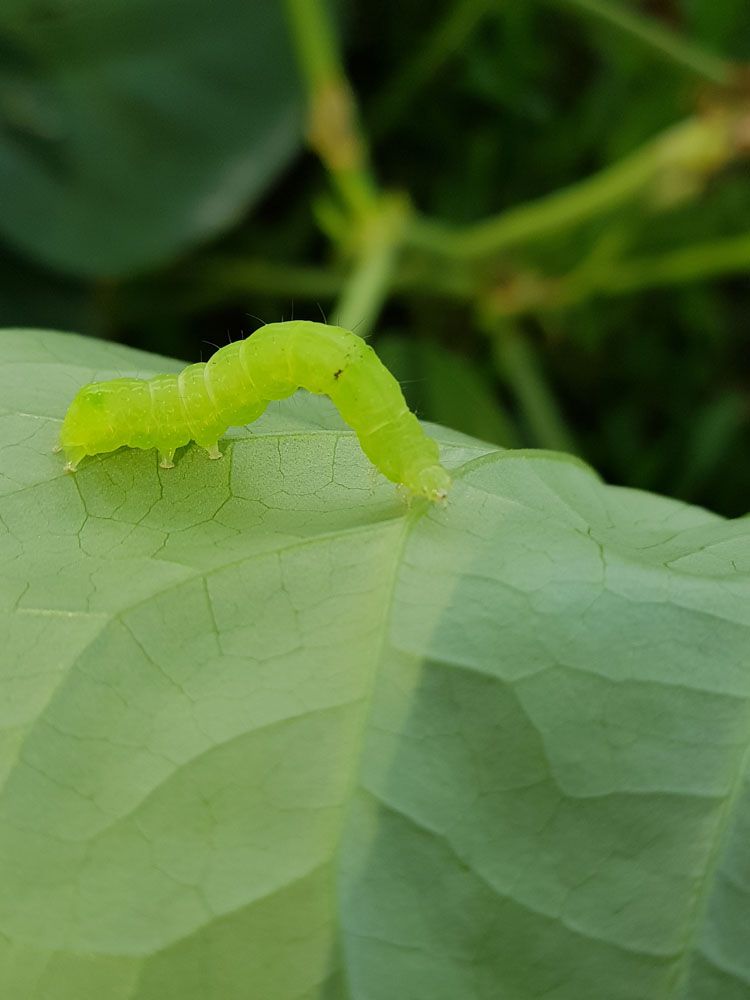
Soybean Looper – Psedoplusia includes
Soybean Looper – Pseudoplusia includes
Common Name: Soybean Looper
Latin Name: Pseudoplusia includes
Appearance:
The Soybean Looper has specific traits throughout its life cycle. As a caterpillar, it has a thin and elongated body with a green tint and white stripes down its sides. Adult moths have a wingspan ranging from 1 to 1.5 inches with a mottled pattern with varied colours of brown, tan, and grey.
Host Plant:
The Soybean Looper is known for eating many different kinds of plants, but they really like soybean crops. However, they are known to attack many other plants and foods, such as decorative plants, veggies, and legumes.
Territory:
The Soybean Looper has a large geographical range, covering North and South America. It is most noticeable in agricultural regions where soybeans and other host plants are grown.
Damages caused by Soybean Looper:
The larvae of the Soybean Looper eat a lot and do a lot of damage to the leaves of target plants. They can kill plants by eating their leaves, which can hurt the health of the plants generally and possibly lower food yields. Farmers are worried about Soybean Loopers because they hurt the economy by cutting down on soybean production.
Life History and Habitat:
The Soybean Looper’s life story is made up of different stages:
Egg Stage:
- Adult female moths deposit tiny spherical eggs on the undersides of host plant leaves.
- Caterpillars hatch from their eggs and start eating the leaves of their host plants.
- They go through several instars, during which they get bigger and eat a lot of plant matter.
- Caterpillars that are fully grown pupate in the ground or on dead plants.
- There is a time of change during the pupal stage before the moths appear as adults.
- It is usually at night when adult moths come out of their eggs.
- The adult stage of the life cycle continues with mating and laying eggs.
